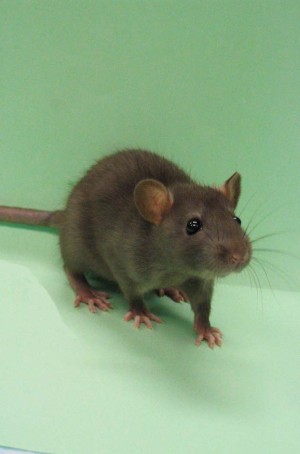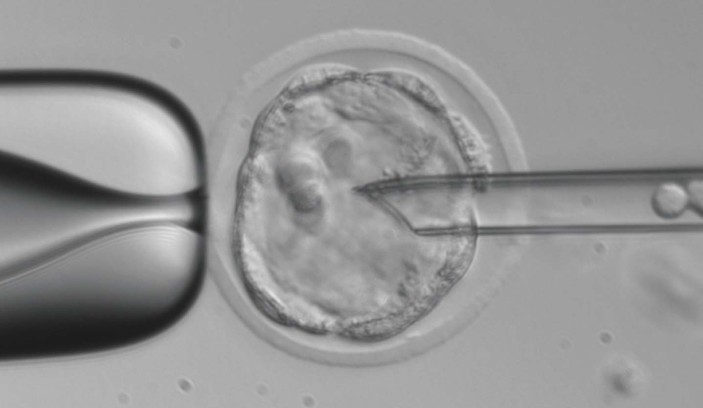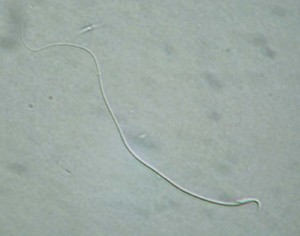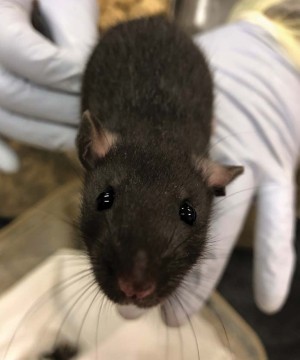After a genetic revolution in the 80s, mice overtook rats as the laboratory animal of choice for many researchers. But in recent years, the gene editing capabilities that had lagged a little for the larger rodent have been coming up to par with their murine cousins. Is a return to rats on the way?
Make no mistake, rats are not just big mice. Both may be rodents, but millions of years of evolution separate Rattus norvegicus from Mus musculus. Rats are obviously larger – about ten times the size of a lab mouse – but they are also more social animals and can be quicker to pick up more complex tasks. They also share more physiological similarities with humans than mice while still being a small animal, says Jean Cozzi, an innovation manager at Charles River. For over a century the rat was king, the preferred rodent model for many in the biomedical field and the animal behind much work in physiology and toxicology.

That changed in the 1980s with a revolution in genetics. Researchers found themselves able to manipulate the genes of mice – but not necessarily rats – in increasingly complex ways. “Regardless of whether mouse is the best model or not, it was the only model available for genetic modification,” says Yuksel Agca, a researcher at the University of Missouri and co-investigator of the Mutant Mouse Resource & Research Center and Rat Research and Resource Center there.
Mus musculus usurped the throne, and the number of mouse strains used in research has surpassed that of rats over the past thirty odd years. Mouse Genome Informatics (MGI), a bioinformatics database dedicated to all things mouse genetics, has recorded over 66,000 different mouse strains; the number of rat listed in the related Rat Genome Database (RGD) is just shy of 4,000. Looking into the literature, 2020 saw over double the number of publications for “mouse model,” ~44,000, to just shy of 19,000 for “rat model.”
A lot has been – and will continue to be – done with the mouse. But there are advantages to using a rat as your model organism – its physiology for pharmacology, and its cognitive abilities for studying neurological function, for example, “which in a certain way got lost in molecular biology with the transgenic mouse,” says Bart de Strooper, an Alzheimer’s Disease researcher at the VIB-KU Leuven Center for Brain & Disease Research.
Transgenic rats are here nonetheless, and a second genetic revolution has made them easier to make than ever. Rats are poised for a return, with resources in place for those interested in revisiting their choice of rodent.
Leveling the playing field
The 1980s brought two technological advances that gave scientists a means to manipulate mammalian genetics. The first, early in the decade, was pronuclear injection, in which a DNA construct is injected into a zygote; the developing animal will incorporate that DNA into its own, resulting in a transgenic animal. Pronuclear injections were used to study ‘gain of function’ genetics, in which the manipulated gene is over expressed. Not long after, scientists isolated embryonic stem cells; genes in these cells can be manipulated via homologous recombination or gene trapping to ‘knock out’ that gene’s function.
These technologies aren’t perfect but worked well off the bat in mice. Rats, however, were a different story. It took until the 1990s for pronuclear injection technology to make it to the rat, says Agca, because it was a less efficient than in mice. Rat embryos proved more subject to damage from the injected DNA, and in those that did survive, gene integration tended to be lower in rats than in mice, meaning hundreds of zygotes were needed to achieve a handful of the germline transmissions needed to create a founder animal and establish a transgenic rat line (an added complication: super-ovulation protocols to yield extra eggs have not been quite as effective in rats either, notes Agca.).
Creating knock outs was also problematic in rats. The necessary embryonic stem cell lines have been relatively easy to establish in mice says Agca, with groups like the International Mouse Phenotyping Commissions systematically knocking out mouse genes one-by-one. For in vitro reasons that researchers are still working out, embryonic stem cells isolated from rats, however, don’t like to stay embryonic stem cells; instead, they tend to differentiate into other cell types, rather than waiting to be edited and raised into a full rat.
The first transgenic rat did nevertheless turn up in 1990 – an animal for studying hypertension1 - and knockouts, and later knockins, have been produced using the few rat embryonic stem cell lines that are available as well as with technologies that avoid the need for those cells, such as Zinc Fingers (here, rats beat their murine relatives, in fact) and TALENS (see ref. 2 for a review on other firsts in rats compared to mice).
But, the ease of editing mice nevertheless led more and more researchers towards the smaller rodent. “Historically, rats were preferred in certain areas,” says Elizabeth Bryda, director of the Rat Research and Resource Center (RRRC) and the University of Missouri Animal Modeling Core. “When we were able to genetically manipulate mice, people started turning more to the mouse, only because they could knock out genes, they could do these complicated genetic manipulations.”
Rats fell behind…until a technology called CRISPR came along. “It changed everything,” says Agca, leveling the rodent playing field.
The ‘molecular scissors,’ recently awarded the Nobel Prize in Chemistry, avoid the need for embryonic stem cells and can be used to create genetically modified animals – of nearly all shapes and sizes – more quickly and inexpensively than prior approaches. To create knock out animals, you’ll need microinjection equipment, your zygote, and a genetic construct that tells the Cas9 enzyme where to cut the organisms’ DNA. “Now there’s no barrier - we can easily manipulate the rat in any way that you can in a mouse,” says Bryda. That includes the ability to overexpress genes and knock them out across the animal from the get go as well as conditionally.

The first applications of CRISPR in rats were published in Nature Biotechnology in 20133,4, and the technology has since been used to produce rat models of a number of different human diseases2. “It has pushed the rats back into the research race,” says Cozzi. As their physiology is closer to humans than mouse, CRISPR will help researchers create more relevant models in areas such as cardiovascular research, metabolic disease, neuroscience, and cancer. Rats and humans share genomic regions in different cancers, for example, and he notes that breast cancers in rats are hormone responsive and have more stage similarities to humans than mice. “I think rat people will stick to the rat more than ever,” he says, while those who worked in mice may start considering the larger animal as well, to help reveal different pieces of their story. “In research, you need different models,” Cozzi says.
De Strooper has long used transgenic mice to study Alzheimer’s disease but these, he says, are incomplete models. They’ll develop the amyloid plaques and tau tangles characteristic of the disease in humans, but any neuropathological phenotypes are weak. He’d be thinking about a rat model for over a decade - viral vector-based transgenic rat models were promising, but without the ability to create stable embryonic stem cells, those lines themselves wouldn’t be stable. With the advent of CRISPR, he and his lab finally decided to give it a try, creating an Psen1 knock-in rat5. They successfully edited the animals, but unfortunately couldn’t age them long enough to observe any meaningful phenotypes – the Long Evans rat they chose has a propensity to develop tumors. Work with humanized mice goes on but encouraged by the ease of using CRISPR, they are trying again with a different rat: Fischer F344. Those animals are almost ready, says de Strooper’s colleague, Lutgarde Serneels, after which they will need to age for about two years to see if they develop both the physiological markers of Alzheimer’s and its functional deficits.
The lab has big plans for rat – if it works out. “If this rat model develops full Alzheimer’s, it will replace our mouse models,” de Strooper says. For decades, molecular biologists have focused on all the things they can do with the mouse, but that’s only gotten the field so far. “We give ourselves two years to see what happens,” he says.
Rat resources at the ready
When Bryda took over at Missouri’s Animal Modeling Core in 2016, there was just one rat project in the works; today she says, half of the Core’s projects are to create transgenic rats, many following up from work previously done in mice. “Investigators will come to us and say, ‘Hey, there’s this mouse model – can you make the exact same thing, but in a rat?” she says.
Rats have long offered the advantage of complexity. Whereas much of the mouse field coalesced around the “Black6” strain, rats – lacking those embryonic stem cell lines – stayed a bit more genetically diverse, which may be better representative of the human condition. Among other rat resources, the RGD maintains information about the Rat Hybrid Diversity Panel – a collection of 96 strains that represent the majority of genetic diversity among lab rats; these are characterized at the genome level and preserved as a resource. As genome mapping work in animals shifted to genome-wide association studies in humans, that too has brought a shift towards working with genetically complex animals like the rat. “Now the attention is how can we translate those human findings into a rat model that we can experimentally manipulate?” says Aron Geurts, a researcher at the Medical College of Wisconsin (MCW) working to improve rat research.
An improved rat genome – the first version6 of which was published not that long after that for mouse, says RGD director Anne Kwitek, will only help. “Compared to mouse and human where we probably know the majority of the genes – their starts and their stops and all of the different isoforms - the rat was really far behind,” says Geurts. In May, the Wellcome Sanger Institute, using DNA from a male rat provided by MCW’s Melinda Dwinell, generated a new rat sequence: mRatBN7.27. The genome has been accepted into the Genome Reference Consortium, and RGD will help with curation; international efforts to analyze and annotate it are currently underway. The genome and improved gene annotations will be important for modern research techniques, such as transcriptomics, note Kwitek and Geurts. Researchers will be able to use it to study their genes and variants of interest, and to compare those against other species, such as mice and humans, to identify what’s unique and what’s different.
There is of course still plenty of room to improve rat research. CRISPR is yielding new models but in general struggles to integrate large constructs into a genome Efforts to apply electroporation to zygotes – common already to manipulate stem cells – may help, while also eliminating the need for relatively expensive microinjection systems but for now, ‘humanizing’ genes or replacing large portions of them will still require those embryonic stem cells that have been tricky to maintain for rat lines.
Once a transgenic zygote has been made, it needs to be transferred into surrogate mothers. Currently, that involves surgery, but as ultrasound and probe technologies improve Agca anticipates non-surgical embryo transfer approaches will become more common in both mice and rats; currently, it’s just hard to tell once you’ve passed the embryo through the cervix of an animal so small, he says. Combining CRISPR plus electroporation plus non-surgical embryo transfer would make the process to create transgenic animals incredibly easy, he says, as it would require minimal equipment and technical skill.
Transgenic animals also need to be preserved and distributed to others. While it is fairly straightforward to cryopreserve rat embryos, but this is a laborious process that can be expensive in terms of cost and the number of animals needed, says Bryda. Freezing sperm is cheaper, but that process has been suboptimal in rats Their sperm freeze just fine, but motility tends to be compromised after thawing, a problem associated with unusually long flagella of rat sperm - about 180 micrometers, compared to ~50 micrometers for human sperm (the rat egg, meanwhile, is about 80 micrometers in diameter, requiring the sperm to coil in for entry). Groups like the Rat Research and Research Center and the Center for Animal Resources and Development at Kumamoto University are working on how to preserve sperm motility post-cryorecovery, but it remains a work in progress. “It really is an art,” says Bryda.

With years of a head start, there are more resources available at different institution for breeding and working with mice. For rats, there are still only a handful of core facilities that routinely create transgenic models, plus a few commercial providers, such as Charles River, Taconic, and Cyagen.
Large, centralized rat facilities that bank and distribute rats to the community used to be more common, says Bryda, but those fell away as interest in rats waned. The NIH used to have one, for example, as did a group in Germany. Now, Japan maintains a centralized repository – the National Bio Resource Project for the Rat in Kyoto – while in the United States, the NIH currently supports the Rat Research and Resource Center as a centralized repository to bank rat models donated to the Center, re-derive the animals, and provide other rat services for labs interested but without their own rat capacity. “It runs the gamut – if we’re able to do it we will try,” says Bryda. “It frees up investigators to do their science and not be rat distributors.”
Rat groups like those at MCW will also help as they can, and have bred and shipped animals for investigators (in many cases, former MCW alums) who don’t have in-house capacity, says Geurts. Demand, however, may see more rat cores come online. Increased interest in rats will also help things scale – at MCW for example, the rat research programs are large enough that maintaining rats only costs about 40% more than mice, whereas at some instructions than ratio can be more like 3:1. “In most institutions, a barrier is the cost of rats,” he says, along with their size – they do take up more space. Until more researchers at different institutions demand to use rats – and that they get a farer housing costs to do so – infrastructure will remain a challenge, even if making the animals is easier than ever before. Nevertheless, the animals are coming (Ready? Box 1), and there are rat resources out there to help (see ref. 8 for an overview).

Adding a rodent can yield new insights. When Bryda’s lab was first learning how to use CRISPR a few years ago, they decided to recreate a mutation associated with Crohn’s Disease (CD) in rats that had previously been modeled in mice. Looking across the species, the rats seems to mimic the human inflammatory bowel disease physiology a bit better9. But whereas mice and humans can be homozygous for this mutation, in rats its lethal. The CD model only needs to be heterozygous to mimic the diseases, but that homozygosity is a problem in this gene could tell us a little more about general rat biology, she says.
So which rodent is it: mouse or rat? “There’s a place for both,” says Bryda. Do you need a larger animal for implants or surgery, or have a need for social behaviors? Maybe it’s time for a rat. If those are less important considerations, maybe stick with mice. It all depends.
“We really encourage people to think about what species is the most appropriate based on what you’re studying and the question you’re asking, and to maybe be more flexible about that,” says Bryda. “We tell people all the time: are you sure the mouse is the best animal model? Is there something else you should be working with?”
References
Mullins, J. J. & Ganten, J. P. Nature 344, 541–544 (1990).
Chenouard, V. et al. Front Genet https://doi.org/10.3389/fgene.2021.615491 (2021)
Li, D. et al. Nat Biotechnol 31, 681–683 (2013).
Li, W., Teng, F. & Zhou, Q. Nat Biotechnol 31, 684–686 (2013).
Serneels, L. et al. Mol Neurodegeneration 15, 60 (2020).
Rat Genome Sequencing Project Consortium Nature 428, 493–521 (2004).
Howe, K, et al. [version 1; peer review: awaiting peer review]. Wellcome Open Res 6, 118 https://doi.org/10.12688/wellcomeopenres.16854.1 (2021).
Shimoyama, M. et al. ILAR J 58, 42–58 (2017).
Men, H. et al. Mamm Genome 32, 173–182 (2021).
Author information
Authors and Affiliations
Corresponding author
Rights and permissions
About this article
Cite this article
Neff, E.P. Rats on the rise. Lab Anim 50, 205–208 (2021). https://doi.org/10.1038/s41684-021-00812-0
Published:
Issue Date:
DOI: https://doi.org/10.1038/s41684-021-00812-0
